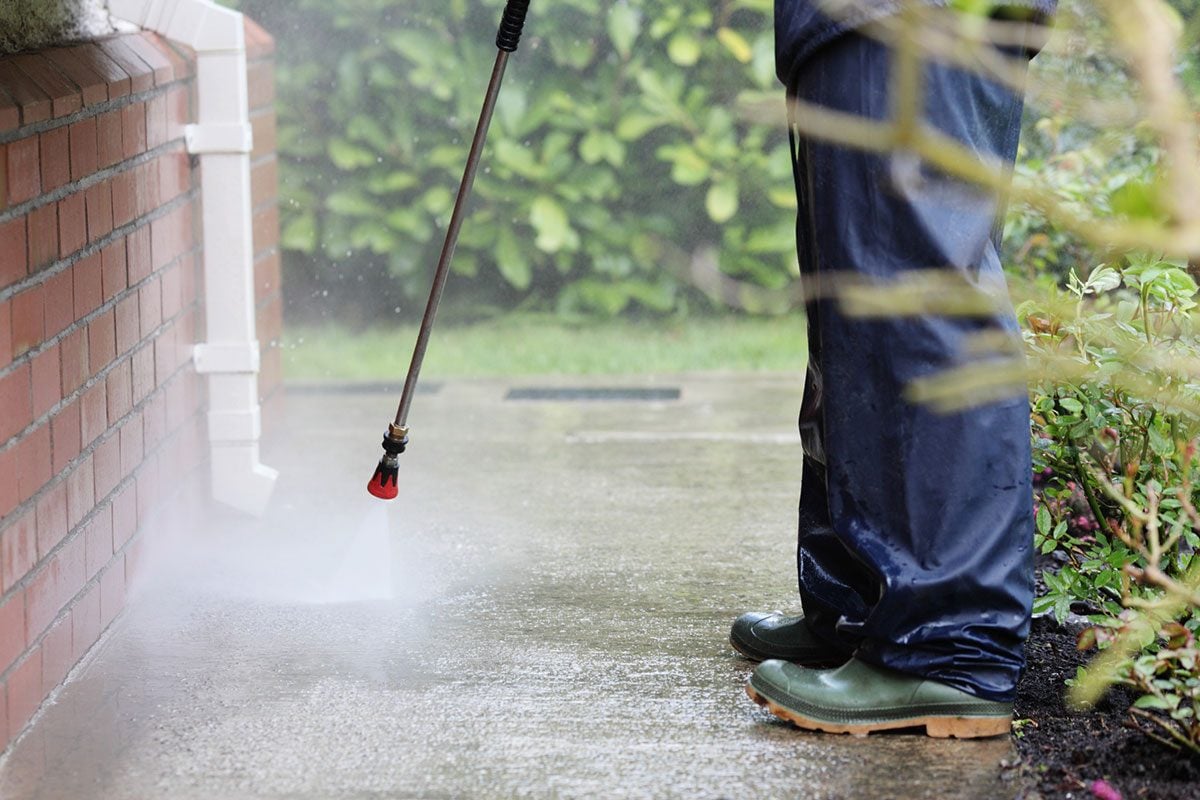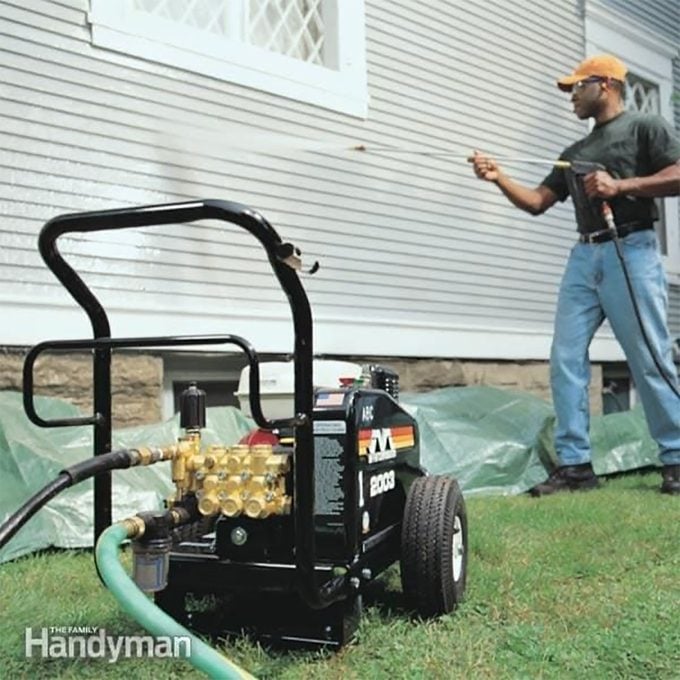Avoid these six mistakes to minimize the risk of property damage or injury when pressure washing.

6 Common Mistakes Made When Pressure Washing

A pressure washer is an amazingly useful tool for home projects, whether it’s spring cleaning, job prep or tidying up after an especially messy chore. And with global sales expected to approach $3 billion by 2024, pressure washers are becoming standard equipment for DIYers worldwide.
It doesn’t take much training to use a consumer-grade pressure washer, but it does require caution to avoid injury or accidental property damage. Make your life simpler and safer by avoiding these six common mistakes committed by pressure washer newbies. Discover the unusual uses of pressure washers.
On This Page
Forgetting to Angle the Spray
When pressure washing, approach the surface to be cleaned at an angle. The goal is to lift the dirt up off the surface so it can be washed away. When you spray directly at a dirty surface, you’ll simply drive the dirt deeper into whatever you’re trying to clean. This is especially true on porous material such as wood or concrete.
Really tough stains and ground-in dirt may require moving the spray head around to attack from different directions, but there should always be some angle there to “scoop” away the dirt.
If you don’t spray at an angle, you’ll likely end up with blowback dirt flying around. It’s never enjoyable to get a face full of wet muck, and if you’re not wearing safety glasses some of it could land in your eye. That brings us to our next common mistake…
Not Using Safety Equipment
Pressure washers may look like oversized squirt guns, but they are definitely not toys. A narrow stream of water discharged at several thousand pounds per square inch (PSI) can slice through flesh almost as efficiently as a saw. Even worse, the high pressure drives water and dirt deep into the tissue, often leading to infection.
Another common mistake often occurs on hot summer days: failing to wear close-toed shoes. Sandals may be more comfortable, but a minor lapse of attention might send you to the hospital. And it’s a big mistake to forget safety glasses.
This ABC News segment does a good job of highlighting the risks associated with pressure washers, with special focus on the increased danger posed by using zero degree nozzles.
Using the Wrong Nozzle
Selecting the right pressure washer nozzle tip is a key step in safety and efficiency, and one that many people get wrong.
There’s lots of advice out there about what you can or cannot pressure wash. Generally you can pressure wash almost anything as long as you’re using the right nozzle! Nozzles change the angle and spread of the spray, which affects the PSI coming out of the wand. A wider angle creates a lower pressure.
Now, we’re not suggesting you pressure wash your fragile glassware. But if you plan ahead and take proper precautions, you can control the risk of damage. When in doubt, always do a test run with a bit of scrap material, or in an area that won’t be noticeable or can be easily patched.

Spraying Upward Against Siding
When pressure washing your home, never direct the spray upward into the siding. Siding channels water down from the roof to the foundation. It’s intentionally left open on the bottom so that any water that penetrates its barrier harmlessly drains out. Spraying from below forces water into those gaps between the siding and the house — a surefire recipe for disaster. Find out why should not pressure wash your roof.
The best solution is to remain on the ground and use a solid or telescoping extension wand. Don’t hop on a ladder. The kickback from pressure washing can potentially send you tumbling to the ground.
Look for extension wands with a pronounced downward angle or slight curve. That will allow you to direct the spray top to bottom or along the face of the siding.
Pressure Overload
Pressure washer pumps generate a closed system of pressurized water. When you pull the trigger on the spray gun, that pressure is released. But what happens when you’re not pulling that trigger? The pressure can’t be allowed to build up in one spot, so a by-pass valve re-directs water away from the spray gun and back into the system.
It’s a solution that comes with one downside: temperature. All that re-directed water is continuously heated as it circulates through the system. Eventually, it gets hot enough to damage the pump, leading to early burn-out and a costly repair. (Some models avoid this issue by using ceramic-lined parts, but those generally aren’t in the consumer-grade price range.)
Don’t turn on the pressure washer unless you’re ready to use it. If you need to answer the phone or deal with something, turn off the washer until you’re ready to start work again. For most models, you’ll be fine as long as you’re pausing for short breaks of a minute or so.
Using a Gas-Powered Pressure Washer Indoors
Gas-powered pressure washers are more powerful and portable than corded electric models, making them a favorite for professionals and DIYers in areas without electricity. They also produce carbon monoxide, and should never be used without proper ventilation. Get to know why your gas-powered pressure washer won’t start.
A study published in the Journal of Emergency Medicine concluded pressure-washer related carbon monoxide poisonings spike after natural disasters as homeowners and contractors clean out damaged basements.
Always follow the manufacturer’s recommendations for using a pressure washer. When in doubt, err on the side of caution and safety.

















